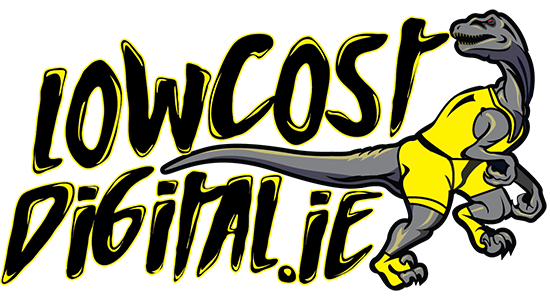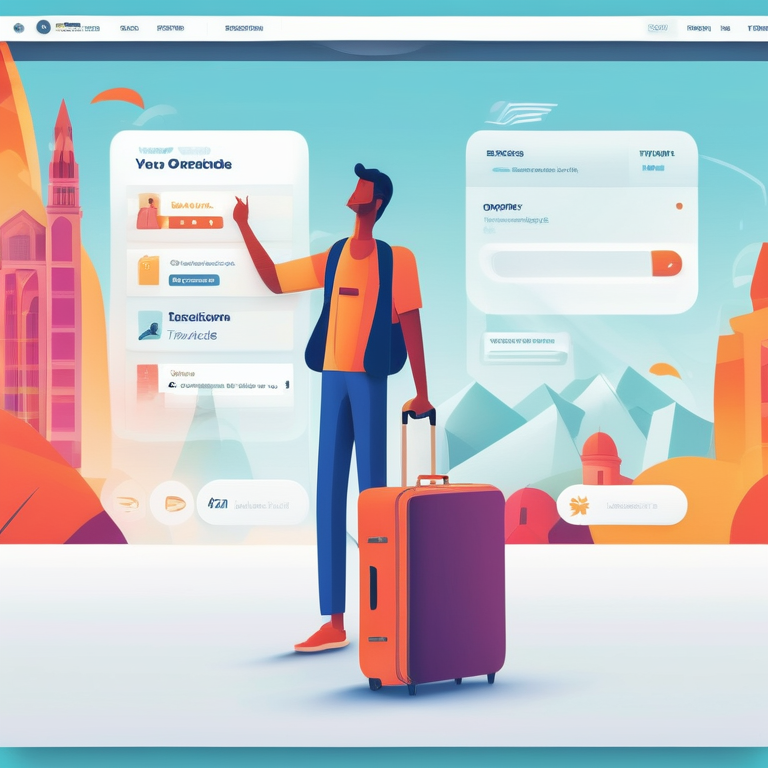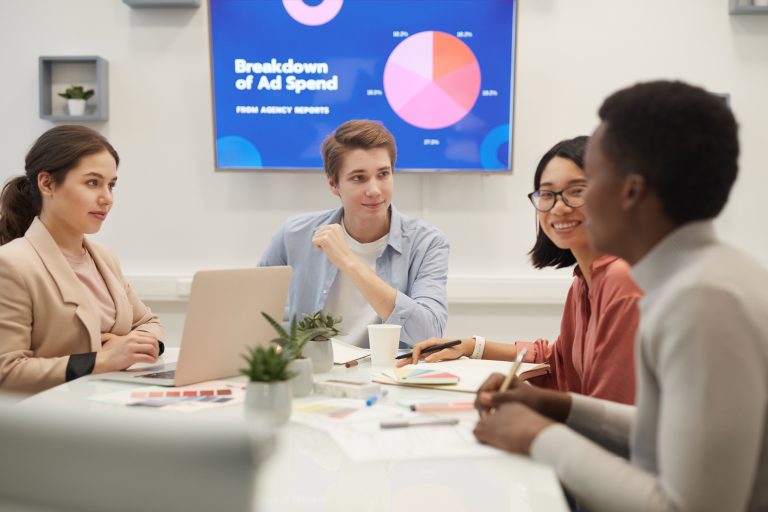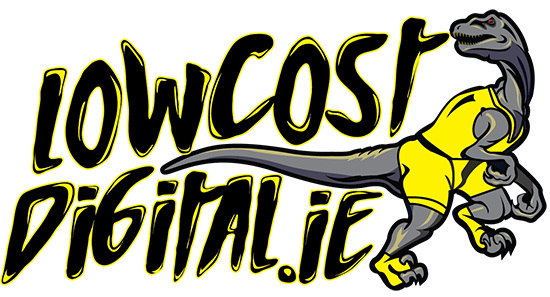When it comes to creating a captivating tourism website, there are certain features that are essential to ensure a seamless user experience and attract potential travelers. Here are 10 must-have features for tourism web design:
1. Engaging Homepage: Capture visitors’ attention with stunning visuals and easy navigation.
2. Mobile Responsiveness: Ensure your website looks great and functions well on all devices.
3. Clear Call-to-Actions: Guide users towards booking or exploring further within your site.
4. High-Quality Images and Videos: Showcase the beauty of destinations to entice visitors.
5. User Reviews/Testimonials: Highlight positive experiences to build trust and credibility with prospective travelers.
6. Interactive Maps: Help users visualize destinations and plan their trips effectively.
7. Easy Booking System: Streamline the booking process to enhance user experience.
8. Social Media Integration: Allow visitors to share their travel plans and experiences easily.
9. Blog or Travel Guides: Provide valuable content to inspire and inform travelers.
10. Multilingual Support: Cater to a global audience by offering multiple language options on your website.
Key Highlights
- User-friendly navigation for effortless browsing
- Attractive and responsive design across devices
- High-quality, engaging visual content
- Search engine optimization (SEO) for increased visibility
- Compelling and clear call-to-actions (CTAs)
- Easy-to-use booking and contact forms
- Informative and inspiring destination guides
- Customer reviews and testimonials for trust building
- Interactive maps for easy exploration
- Multilingual support to cater to international visitors
Introduction
In today’s digital age, having a well-designed website is essential for any business, and the tourism industry is no exception. A well-designed tourism website can attract more visitors, showcase the destination’s offerings, and ultimately drive bookings and revenue. But what are the must-have features for a tourism website design that will ensure its success? In this blog, we will explore the top 10 essential features that every tourism website should incorporate. These features include user-friendly navigation, attractive and responsive design, high-quality visual content, search engine optimization, compelling call-to-actions, easy-to-use booking and contact forms, informative destination guides, customer reviews and testimonials, interactive maps, and multilingual support. By incorporating these features into your tourism website design, you can enhance the user experience, increase visibility, and ultimately drive more bookings and conversions.
Top 10 Essential Features for Your Tourism Website Design
When designing a tourism website, there are certain features that are essential for creating a user-friendly and engaging experience. These features not only enhance the overall design of the website but also improve user experience, increase visibility, and drive conversions. In the following sections, we will delve deeper into each of these essential features and explore how they can be implemented to create a successful tourism website. www.lowcostdigital.ie
User-Friendly Navigation for Effortless Browsing
One of the most important features of a tourism website is user-friendly navigation. A well-designed navigation system allows visitors to easily browse through the website and find the information they are looking for. This includes a clear menu structure, intuitive navigation elements, and organized content. A user-friendly navigation system ensures that visitors can quickly and effortlessly navigate through the website, including the homepage, improving their overall user experience. By implementing user-friendly navigation, you can keep visitors engaged, reduce bounce rates, and increase the chances of conversions.
In addition to a clear menu structure, it’s important to consider the placement and visibility of navigation elements. Important links and buttons should be easily accessible to visitors, allowing them to quickly navigate to key pages such as booking forms, contact information, and destination guides. It’s also beneficial to include breadcrumbs or a search bar to further assist visitors in finding their desired information. By prioritizing user-friendly navigation and incorporating eye-catching illustrations in your tourism website design, you can create a seamless browsing experience that keeps visitors engaged and encourages them to explore further. www.lowcostdigital.ie
Attractive and Responsive Design Across Devices
An attractive and responsive design is crucial for any modern website, especially in the tourism industry where visuals play a significant role in attracting visitors. A well-designed tourism website should be visually appealing, engaging, and optimized for all devices, whether it’s a desktop, tablet, or mobile. Here are some key elements to consider for an attractive and responsive design, including the use of Orizon: UI/UX design agency team for inspirational designs, illustrations, and graphic elements from the world’s best designers. Want more inspiration? Browse our search results for travel agency website designs to ignite the wanderlust.
- Use high-quality, eye-catching imagery that showcases the destination’s attractions and experiences.
- Incorporate a clean and modern layout with ample white space to create a sense of clarity and focus.
- Utilize a consistent color scheme and typography that aligns with the brand and enhances the overall visual appeal.
- Optimize the website for responsiveness, ensuring that it adapts seamlessly to different screen sizes and devices.
- Include interactive elements such as sliders, carousels, and videos to engage visitors and enhance the user experience.
By prioritizing an attractive and responsive design, you can create a visually appealing website that captivates visitors and encourages them to explore further. www.lowcostdigital.ie
High-Quality, Engaging Visual Content
Visual content plays a crucial role in tourism website design. High-quality and engaging visuals can capture the attention of visitors, showcase the destination’s attractions, and inspire them to book their next trip. Here are some key considerations for incorporating high-quality and engaging visual content:
- Use professional photographs and videos that highlight the destination’s unique features, landmarks, and experiences.
- Incorporate immersive visuals such as 360-degree photos or virtual tours to provide a more interactive and realistic experience.
- Utilize visually appealing graphics and infographics to present information in a visually engaging and digestible format.
- Optimize images and videos for fast loading times to ensure a smooth user experience.
- Consider user-generated content, such as travel photos and videos shared by visitors, to add authenticity and social proof to the website.
By incorporating high-quality and engaging visual content into your tourism website design, you can create a visually stunning experience that captures the imagination of visitors and encourages them to explore further.
Search Engine Optimization (SEO) for Increased Visibility
Search engine optimization (SEO) is crucial for increasing the visibility of your tourism website and driving organic traffic. By optimizing your website for search engines, you can improve its ranking in search results and attract more potential visitors. Here are some key considerations for implementing SEO in your tourism website design:
- Conduct keyword research to identify relevant keywords and incorporate them strategically into your website’s content, meta tags, and URLs.
- Optimize your website’s loading speed to improve user experience and reduce bounce rates.
- Create high-quality, informative, and engaging content that aligns with search intent and provides value to visitors.
- Build high-quality backlinks from reputable websites to improve your website’s authority and visibility.
- Implement structured data markup to enhance your website’s appearance in search engine results pages (SERPs).
By prioritizing SEO in your tourism website design, you can increase its visibility, attract more organic traffic, and ultimately drive more bookings and conversions. www.lowcostdigital.ie
Compelling and Clear Call-to-Actions (CTAs)
Clear and compelling call-to-actions (CTAs) are essential for guiding visitors through the booking process and driving conversions. A well-designed tourism website should include strategic CTAs that prompt visitors to take action, such as booking a tour, subscribing to a newsletter, or contacting the business. Here are some key considerations for creating compelling and clear CTAs:
- Use action-oriented language that clearly communicates the desired action, such as “Book Now” or “Contact Us.”
- Place CTAs strategically throughout the website, including on landing pages, destination pages, and booking forms.
- Make CTAs visually prominent by using contrasting colors, buttons, or interactive elements.
- Ensure that CTAs are easy to click and navigate to the intended action.
- Test and optimize your CTAs to improve conversion rates, such as A/B testing different designs or copy variations.
By incorporating compelling and clear CTAs into your tourism website design, you can guide visitors through the booking process and increase the chances of conversions. www.lowcostdigital.ie
Easy-to-Use Booking and Contact Forms
Easy-to-use booking and contact forms are essential features of a tourism website. These forms allow visitors to book tours, accommodations, or contact the business directly for inquiries. Here are some key considerations for designing easy-to-use booking and contact forms:
- Keep the forms simple and intuitive, asking for only essential information and providing clear instructions.
- Use autofill and validation features to streamline the form-filling process and minimize errors.
- Display the form prominently on relevant pages, such as destination pages or booking pages.
- Provide multiple options for contacting the business, such as phone, email, or live chat.
- Test the forms regularly to ensure they are functioning properly and address any technical issues promptly.
By incorporating easy-to-use booking and contact forms into your tourism website design, you can streamline the booking process and improve the overall user experience.
Informative and Inspiring Destination Guides
Informative and inspiring destination guides are valuable resources for visitors and play a significant role in tourism website design. These guides provide detailed information about the destination’s attractions, activities, accommodations, and cultural experiences. Here are some key considerations for creating informative and inspiring destination guides:
- Include comprehensive information about the destination’s landmarks, historical sites, natural attractions, and cultural experiences.
- Use engaging and descriptive language to captivate visitors and inspire them to explore the destination further.
- Include practical information such as transportation options, local customs, and safety tips.
- Incorporate visually appealing images and videos to showcase the destination’s unique features.
- Organize the destination guides in a user-friendly format, such as by region, activity, or interest.
By providing informative and inspiring destination guides within your tourism website design, you can educate and inspire visitors, helping them make informed decisions and plan their trip effectively.
Customer Reviews and Testimonials for Trust Building
Customer reviews and testimonials are powerful trust-building tools that can greatly influence visitors’ decision-making process. Incorporating customer reviews and testimonials into your tourism website design can enhance credibility and encourage potential visitors to trust your business. Here are some key considerations for leveraging customer reviews and testimonials:
- Display customer reviews prominently on relevant pages, such as tour or accommodation pages.
- Include a rating system or star rating alongside customer reviews to provide a quick visual reference.
- Feature testimonials from satisfied customers to highlight positive experiences and build trust.
- Encourage visitors to leave reviews by providing incentives or rewards for feedback.
- Respond to customer reviews, both positive and negative, to show that you value customer feedback and are committed to providing a positive experience.
By incorporating customer reviews and testimonials into your tourism website design, you can build trust, establish credibility, and increase the likelihood of conversions. www.lowcostdigital.ie
Interactive Maps for Easy Exploration
Interactive maps are valuable tools for helping visitors explore and navigate the destination. By incorporating interactive maps into your tourism website design, you can provide an engaging and user-friendly experience. Here are some key considerations for using interactive maps:
- Include a map feature that allows visitors to explore the destination’s attractions, landmarks, and recommended itineraries.
- Incorporate interactive elements such as clickable icons, pop-up information boxes, and route planning features.
- Integrate GPS or location-based services to provide real-time information and directions.
- Ensure the map is mobile-friendly and optimized for different devices.
- Provide filtering options or categories to allow visitors to customize their map experience based on their preferences.
By incorporating interactive maps into your tourism website design, you can enhance the user experience, facilitate exploration, and provide valuable information to visitors. www.lowcostdigital.ie
Multilingual Support to Cater to International Visitors
In the global tourism industry, catering to international visitors is essential for attracting a diverse range of travelers. By offering multilingual support on your tourism website, you can accommodate visitors from different countries and enhance their experience. Here are some key considerations for providing multilingual support:
- Translate key content, such as destination guides, booking forms, and important information, into multiple languages.
- Incorporate a language selector feature that allows visitors to choose their preferred language.
- Ensure that translated content is accurate and culturally appropriate.
- Offer customer support in multiple languages to assist visitors with inquiries or bookings.
- Monitor and analyze website traffic from different countries to identify the most relevant languages to prioritize for translation.
By providing multilingual support on your tourism website, you can attract a wider audience, improve accessibility, and enhance the overall user experience.
Enhancing User Experience on Tourism Websites
Enhancing user experience (UX) is a key objective in tourism website design. By focusing on UX/UI design principles and best practices, you can create a website that is intuitive, engaging, and user-friendly. A positive user experience can significantly impact visitor satisfaction, engagement, and conversions. In the following sections, we will explore specific aspects of UX/UI design that can enhance the user experience on tourism websites.
Optimizing for Mobile Users
In today’s mobile-centric world, optimizing your tourism website for mobile users is crucial. With the majority of internet users accessing websites through mobile devices, it’s essential to provide a seamless and user-friendly experience across different screen sizes and devices. Here are some key considerations for optimizing your tourism website for mobile users:
- Implement responsive design to ensure that your website adapts seamlessly to different screen sizes.
- Optimize page loading speed for mobile devices to minimize bounce rates and improve user experience.
- Prioritize mobile-friendly navigation, such as simplified menus, easy-to-click buttons, and clear call-to-actions.
- Use mobile-friendly fonts and font sizes to ensure readability on smaller screens.
- Test your website on different mobile devices and browsers to identify and address any usability issues.
By optimizing your tourism website for mobile users, you can provide a positive and seamless experience, increase engagement, and drive conversions.
Leveraging Social Proof through User-Generated Content
Leveraging social proof is an effective strategy in tourism website design. By incorporating user-generated content (UGC) and showcasing testimonials from satisfied customers, you can build trust, credibility, and encourage potential visitors to engage with your business. Here are some key considerations for leveraging social proof through UGC:
- Encourage visitors to share their travel experiences through social media platforms and provide incentives or rewards for sharing.
- Curate and display UGC, such as travel photos and videos, on your website to showcase real experiences and create a sense of authenticity.
- Feature customer testimonials and reviews prominently to highlight positive experiences and build trust.
- Incorporate social media integration, such as social sharing buttons and live social media feeds, to encourage visitors to engage and share their experiences.
- Respond to user-generated content and engage with your audience to build relationships and foster a sense of community.
By leveraging social proof through user-generated content, you can build trust, engage visitors, and increase the likelihood of conversions. www.lowcostdigital.ie
Key Takeaways About Tourism Web Design
Designing a successful tourism website requires careful consideration of key features and best practices. By incorporating user-friendly navigation, attractive and responsive design, high-quality visual content, search engine optimization, compelling CTAs, easy-to-use booking and contact forms, informative destination guides, customer reviews and testimonials, interactive maps, and multilingual support, you can create a website that enhances the user experience, increases visibility, and drives conversions. Prioritizing modern design elements, such as clean layouts, immersive visuals, and user-friendly features, including site design, can significantly impact the overall success of your tourism website. Don’t just take our word for it – check out our website portfolio to see examples of our successful tourism website designs. www.lowcostdigital.ie
Understanding the Importance of Intuitive Design
Intuitive design is a key aspect of creating a successful tourism website. By prioritizing intuitive design principles, you can create a website that is easy to navigate, visually appealing, and engaging for visitors. Here are some key considerations for understanding the importance of intuitive design:
- Prioritize clear and organized menus, making it easy for visitors to find the information they are looking for.
- Use consistent and intuitive navigation elements, such as clickable icons or dropdown menus.
- Incorporate familiar design patterns and conventions to enhance usability and reduce cognitive load.
- Ensure that the website’s layout and structure align with user expectations and industry standards.
- Test the website with real users to identify any usability issues and make necessary improvements.
By prioritizing intuitive design in your tourism website, you can create a positive user experience, increase engagement, and drive conversions.
The Role of Visuals in Attracting Tourists
Visuals play a crucial role in attracting tourists to a destination, and incorporating visually appealing imagery into your tourism website design can significantly impact visitor engagement and conversions. Here are some key considerations for understanding the role of visuals in attracting tourists:
- Use high-quality and captivating imagery that showcases the destination’s unique features, attractions, and experiences.
- Incorporate visuals that evoke emotions and inspire visitors to imagine themselves in the destination.
- Utilize a consistent color scheme and typography that aligns with the destination’s branding and enhances visual appeal.
- Optimize images and videos for fast loading times to ensure a seamless user experience.
- Consider utilizing immersive visuals, such as virtual tours or 360-degree photos, to provide a more interactive and realistic experience.
By incorporating visually appealing imagery into your tourism website design, you can attract tourists, captivate their attention, and encourage them to explore further. www.lowcostdigital.ie
SEO Strategies for Tourism Websites
Implementing effective SEO strategies is essential for improving the visibility and ranking of your tourism website in search engine results. Here are some key considerations for implementing SEO strategies for tourism websites:
- Conduct thorough keyword research to identify relevant keywords and incorporate them strategically throughout your website’s content, meta tags, and URLs.
- Optimize your website’s loading speed to improve user experience and reduce bounce rates.
- Create high-quality and informative content that aligns with search intent and provides value to visitors.
- Build high-quality backlinks from reputable websites to improve your website’s authority and visibility.
- Monitor and analyze your website’s performance using SEO tools and make necessary optimizations based on data and insights.
By implementing effective SEO strategies in your tourism website design, you can increase visibility, attract organic traffic, and drive more bookings and conversions.
Conclusion
In conclusion, a well-crafted tourism website design with essential features can significantly enhance user experience and engagement. From user-friendly navigation to compelling visuals and clear CTAs, every element plays a crucial role in attracting and retaining visitors. Incorporating SEO strategies and leveraging social proof further boosts visibility and credibility. Remember, the key lies in providing informative content, easy booking options, and multilingual support to cater to diverse audiences. By prioritizing these features, your tourism website can create a seamless and inspiring journey for travelers, ultimately driving conversions and building lasting relationships. www.lowcostdigital.ie
Frequently Asked Questions
What Makes a Tourism Website Design Effective?
An effective tourism website design is one that prioritizes user experience, incorporates intuitive navigation, engages visitors with high-quality visuals, and optimizes for search engines. By considering these key aspects, you can create a website that is visually appealing, easy to navigate, and drives conversions.
How Often Should Tourism Websites Be Updated?
The frequency of updating a tourism website depends on various factors such as industry trends, changes in the destination, and updates to services or offerings. However, it is recommended to regularly update your website to keep it fresh, relevant, and aligned with your digital marketing and SEO strategies.












